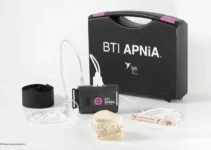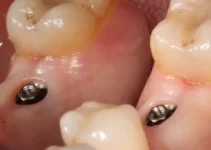Exploring natural methods to achieve a brighter smile is both cost-effective and gentle on your teeth. This article delves into various home remedies that can help whiten teeth naturally without the harsh effects of chemicals found in commercial whitening products. From baking soda and hydrogen peroxide mixtures to oil pulling with coconut oil, we’ll explore scientifically backed techniques that not only improve dental aesthetics but also promote overall oral health. Discover which methods might work best for you and how to safely implement them into your dental care routine.
Natural Remedies to Whiten Your Teeth
Many individuals seek whiter teeth to enhance their smile and boost their confidence. While there are numerous over-the-counter products available, natural remedies have gained popularity due to their accessibility and perceived safety. It’s important to note that natural whitening methods may not be as effective or fast-acting as professional treatments, but they can still offer noticeable improvements.
This article will explore two popular natural remedies: using baking soda and hydrogen peroxide, and oil pulling with coconut oil. We’ll discuss the methods, effectiveness, and any potential risks associated with these treatments. Before trying any remedy, ensure you consult with your dental professional to determine if it’s appropriate for your dental health needs.
Using Baking Soda and Hydrogen Peroxide
Baking soda, or sodium bicarbonate, is a common ingredient in toothpaste due to its mild abrasive properties. It helps to scrub away surface stains on the teeth, making them appear whiter. Hydrogen peroxide is a bleaching agent that can further help to remove stains and disinfect the mouth. When combined, these two ingredients can be an effective natural whitening solution.
To use baking soda and hydrogen peroxide for teeth whitening, follow these steps:
- Mix a small amount of baking soda with hydrogen peroxide to form a paste. The ratio is typically 1:2, creating a slightly runny mixture.
- Apply the paste to your toothbrush and brush your teeth gently for two minutes.
- Spit out the mixture and rinse your mouth thoroughly with water.
It’s important to use this remedy sparingly, as excessive use can wear down your tooth enamel and lead to sensitivity. Most dentists recommend using this paste no more than once or twice a week.
Studies have shown that baking soda and hydrogen peroxide can be effective in reducing stains and whitening teeth. However, their effectiveness varies from person to person and depends on the type of stains present. Always use caution and consult with your dentist before incorporating this method into your oral care routine.
Oil Pulling with Coconut Oil
Oil pulling is an ancient Ayurvedic practice that involves swishing oil in the mouth to improve oral hygiene and remove toxins. Coconut oil is often the preferred choice due to its pleasant taste and additional health benefits, such as its antibacterial and anti-inflammatory properties.
To practice oil pulling with coconut oil:
- Take a tablespoon of coconut oil and place it in your mouth. It will liquefy quickly as it warms up.
- Swish the oil around your mouth for 10 to 20 minutes, ensuring it reaches all areas of your mouth.
- Spit the oil into a trash can (not the sink, as it can clog pipes) and rinse your mouth with water.
- Brush your teeth as usual.
The primary mechanism behind oil pulling is its ability to reduce harmful bacteria in the mouth, which can contribute to plaque buildup and staining. While scientific evidence supporting the teeth whitening effects of oil pulling is limited, many users report a noticeable improvement in the brightness of their smile.
Oil pulling is considered safe for daily use and can be a beneficial addition to your oral hygiene routine. However, it should not replace regular brushing and flossing. Combine oil pulling with conventional dental care practices for optimal oral health.
In conclusion, natural remedies such as using baking soda and hydrogen peroxide, and oil pulling with coconut oil, offer accessible and potentially effective ways to whiten your teeth. However, results can vary, and it is essential to use these methods correctly and in moderation. For more comprehensive dental advice and tips, be sure to read our other articles on oral care.
Dietary Changes for Whiter Teeth
Achieving and maintaining whiter teeth often involves more than just regular brushing and professional dental treatments. Dietary changes can play a significant role in enhancing the natural whiteness of your teeth. By understanding the impact of certain foods on your dental health, you can make more informed choices that support a brighter smile.
Recent studies have shown that certain foods can either contribute to staining your teeth or help to clean and brighten them. Incorporating the right types of food while avoiding others can help you maintain that pristine white appearance. Let’s delve into the specifics.
Foods to Include
Some foods act like natural whiteners for your teeth. For example, fibrous fruits and vegetables, such as apples, carrots, and celery, can help scrub away plaque and surface stains while you chew. The high water content in these foods also stimulates saliva production, which serves as a natural defense against tooth decay and staining.
Dairy products such as cheese, yogurt, and milk are also beneficial for teeth whitening. They contain calcium and phosphorus, which are essential minerals for strengthening teeth enamel. Additionally, lactic acid in dairy products can help protect your teeth from decay.
Other foods that can promote whiter teeth include nuts and seeds, which have an abrasive texture that can help remove surface stains. Additionally, foods rich in strawberries contain malic acid, which is known to help whiten enamel.
Foods to Avoid
On the flip side, certain foods can contribute to staining your teeth and should be consumed in moderation or avoided altogether. Dark-colored beverages like coffee, tea, and red wine are notorious for causing stains. These drinks contain chromogens, pigments that easily attach to the enamel of your teeth, leading to discoloration.
Sugary foods and drinks also pose a threat to your dental whiteness. The sugar converts to acid in the mouth, which erodes the enamel and can expose the yellow dentin beneath. This erosion not only affects the appearance of your teeth but can also make them more susceptible to staining.
Another category to be cautious about is acidic foods and drinks, such as citrus fruits, vinegar, and soda. These can wear down the enamel, making it easier for stains to set in. It’s advisable to rinse your mouth with water after consuming acidic food to neutralize the pH level in your mouth.
In conclusion, making deliberate dietary choices can significantly aid in maintaining and achieving whiter teeth. By incorporating teeth-friendly foods and avoiding those that cause staining, you are taking proactive steps towards a brighter smile. For more tips on oral health, check out our other articles on dental care and hygiene.
Maintaining Oral Hygiene for a Whiter Smile
A bright, white smile is not only a sign of good oral health but also boosts confidence. Maintaining oral hygiene is fundamental in keeping your smile looking its best. Regular care and attention to your teeth and gums can help prevent discoloration and ensure overall dental wellness. It is essential to adopt and stick to good hygiene practices to achieve and maintain a whiter, healthier smile.
Oral hygiene involves various practices that effectively remove plaque, prevent cavities, and reduce the risk of gum disease. One of the most critical aspects of maintaining a white smile is ensuring that your teeth remain free of plaque and surface stains. Plaque is a sticky film of bacteria that forms on your teeth and can lead to yellowing if not properly managed. Regular brushing, flossing, and professional cleanings are cornerstones of strong oral hygiene.
Additionally, diet plays a significant role in maintaining the color of your teeth. Consuming foods and beverages high in sugars, acids, and tannins can cause discoloration over time. To counteract these effects, it’s advisable to minimize intake of such items and focus on a balanced diet rich in fruits, vegetables, and water, which can naturally help cleanse the teeth and support overall oral health.
Proper Brushing and Flossing Techniques
Brushing and flossing are the foundation of good oral hygiene. However, it’s not just about doing these activities; it’s about doing them correctly. Proper brushing techniques ensure that all surfaces of your teeth are cleaned thoroughly, reducing the risk of plaque buildup and tooth decay. It’s recommended to brush at least twice a day, preferably after meals, using a fluoride toothpaste that helps strengthen tooth enamel.
When brushing, use a soft-bristled toothbrush and hold it at a 45-degree angle to your gums. Use gentle, circular motions to clean the outer, inner, and chewing surfaces of each tooth. Don’t forget to brush your tongue to remove bacteria and freshen your breath. This method effectively removes food particles and plaque without damaging the gums or enamel. Flossing is equally significant and should be done at least once a day to remove plaque and food particles between teeth where a toothbrush can’t reach. Proper flossing technique involves using about 18 inches of floss, winding most of it around each middle finger, and leaving an inch or two to work with. Slide the floss gently between your teeth, curving it into a C-shape around each tooth and moving it up and down. This approach helps clean the spaces between your teeth and below the gumline, areas prone to decay and gum disease.
Incorporating these proper brushing and flossing techniques into your daily routine can significantly enhance your oral hygiene and keep your smile whiter and healthier. Consistency is key, so make these practices an integral part of your daily activities for long-term benefits.
For more comprehensive insights into oral health and ways to keep your smile gleaming, explore our other articles on dental care and maintenance. Your journey to a brighter, healthier smile starts with continuous learning and applying the right practices.
Frequently Asked Questions About Natural Teeth Whitening
Discover the common queries about naturally brightening your smile from the comfort of your home.
What are some safe natural methods to whiten teeth?
Several popular and safe methods to whiten teeth naturally include using baking soda, hydrogen peroxide, or activated charcoal. Baking soda can be used as a mild abrasive to gently scrub away surface stains on teeth, while hydrogen peroxide acts as a natural bleaching agent. Applying activated charcoal to teeth might help in removing surface stains due to its high absorbency.
How often should I use natural teeth whitening remedies?
It is generally recommended to use natural teeth whitening methods such as baking soda or activated charcoal no more than once or twice a week to avoid excessive wear on the enamel. When using hydrogen peroxide, it’s safe to use a diluted solution a few times a week as a rinse before brushing with regular toothpaste, ensuring not to swallow any of the solution.

My name is Salman Kapa, a 73-year-old expert in bone regeneration and dental implantology. With decades of experience in the field, I am dedicated to advancing our understanding of oral health and hygiene. Through my research and writing, I aim to contribute to the development of innovative solutions in dental care.




